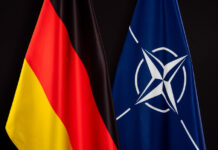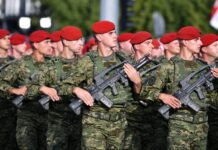
Linking Towards The Future – Generic Vehicle Architecture
David Saw
Superficially, armoured vehicles used to be a less complicated proposition, it was not that long ago that a tank would have had a voice-only radio, there would have been an intercom system for crew communication, the main gun would have been stabilised, with the sight being a relatively simplistic optic.
Realistically a tank of this era would have only been effective in daylight engagements and even then, situational awareness around the vehicle would have been limited, depending on the placement of periscopes and vision blocks.
Then came the remorseless march of technology, sometimes delivering evolutionary developments and sometimes revolutionary developments. In the context of our relatively uncomplicated tank, technology came to add new capabilities. Image intensification, and later thermal imaging systems came into play, gradually growing in capability and allowing combat operations across a full battlefield day. Communications systems became more reliable and basic fire control systems came into service, growing in performance year-on-year.
One of the most significant developments was the opportunities offered by the microprocessor revolution of the 1970s which led to the transformational possibilities delivered by the increasing power of computers. This transformation made its way into the military sphere, in the context of an armoured vehicle it offered a massive expansion in the performance envelope of the communications system, fire control systems now offered unprecedented accuracy, while optronics offered a new paradigm in situational awareness.
All of a sudden the talk was of C4 systems standing for Command, Control, Communications and Computers. More was to come though as C4 expanded to become C4ISR, adding Intelligence, Surveillance and Reconnaissance to the overall capability package. The tank and other armoured vehicles due to their sophisticated sensors and systems, became more than just combat systems.
The tank could act as a command and control (C2) unit, as a communications hub and as a surveillance platform using its sighting systems. It can act as a targeting system for external effectors, such as aircraft or helicopters, other vehicles and artillery for example. This ability to acquire and designate targets for other systems will became increasingly important for tanks. The advantages of the tank in terms of protected mobility added to its integral capabilities mean that it can play a multitude of roles in both high intensity and asymmetric conflict environments, a feature that is all too often ignored. For example, the British did not take tanks to Afghanistan, while Canada and Denmark did, to the benefit of those who worked with them on operations.

In the Beginning
The reason that we have been discussing tanks thus far is simple, it was a tank programme that started the British on the path to the development of a Generic Vehicle Architecture (GVA). During the 1970s there was perception in Britain that, with the arrival of the T-64 and the T-72, Soviet armour had undergone a qualitative shift upwards. As a result, NATO armour was rapidly becoming inferior and while the British Chieftain tank was still viable and could be improved, the British Army would need a new generation main battle tank (MBT) to counter current and future threat developments. The failure of the Anglo-German Future Main Battle Tank (FMBT)/KPz3 programme opened the way for a new British tank programme, and this was the MBT-80, with the programme getting underway in September 1978.
Where the MBT-80 was different was it was going to be one of the first armoured vehicles to take advantage of the microprocessor revolution. An example of this was the fire control system elements being linked by a digital data bus, indeed the MBT-80 is often credited with being one of the first armoured vehicles to have a vetronics (vehicle electronics system). Like many British defence developments, the MBT-80 was a victim of the collapse of the Iranian Revolution and the fall of the Shah, leading to the effective cancellation of a host of major defence contracts between Iran and Britain. This put key elements of the British land defence industry into crisis, forcing the British government to take emergency measures to sustain the industry, part of the cost of those measures was the cancellation of MBT-80.
Even though MBT-80 was cancelled, it provided the basis for the further development of GVA. Equipment installed in a tank has to operate in a very challenging environment, considerations such as power requirements, power distribution and fit, format and function of electronic systems had to be established so that a set of standards could be defined. Once standards had been established it was then possible to further define what was necessary and could be delivered through the evolution of GVA.
Unfortunately, Britain did not have much in the way of new armoured vehicle programmes to refine their GVA ideas, but there were research programmes that helped to progress the capability. One of the most important programmes was the Vehicle Electronics Research Defence Initiative (VERDI). VERDI used a standard Warrior Infantry Section Vehicle (FV510) as a demonstrator vehicle for GVA technologies starting in the late 1980s. Issues were data bus development, integration of sensors and displays, integration of navigation systems and developing methodologies to allow the crew to be presented with this data in a usable manner. The next stage of this effort came in 1993 with the VERDI-2 programme which investigated how technology could allow for effective vehicle operation with reduced crew numbers.
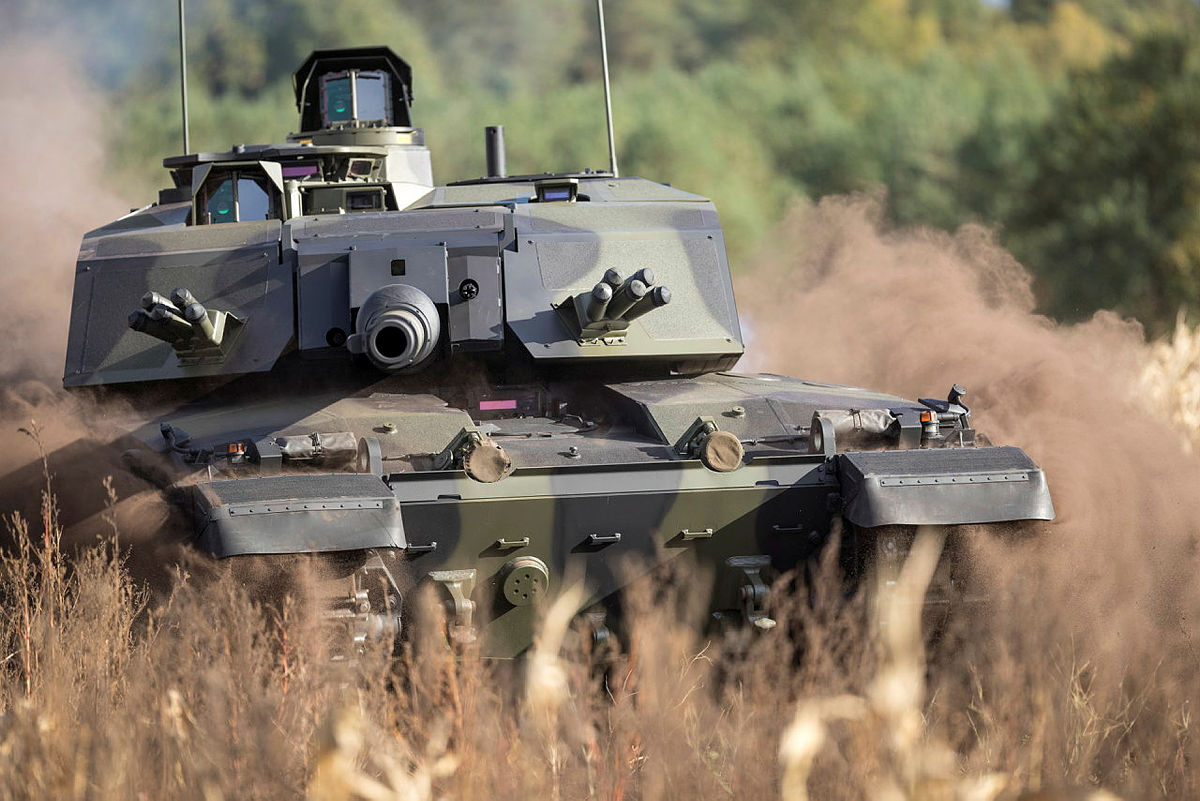
Setting Standards
All of these GVA efforts would be fundamental as the British Army embarked on a new armoured reconnaissance vehicle programme in the mid-1990s known as Tactical Reconnaissance Armoured Combat Equipment Requirement (TRACER). This was a joint programme with the US, their equivalent vehicle was the Future Scout and Cavalry System (FSCS). The FSCS/TRACER programme officially got underway in October 1996. Changing requirements and cost escalation led to the cancellation of FSCS/TRACER in October 2001.
The end of TRACER was yet another failure in terms of British Army armoured vehicle programmes, to which could be added the failure of the Family of Light Armoured Vehicles (FLAV) and the Future Family of Light Armoured Vehicles (FFLAV) programmes that sought to find a replacement for the FV432, Warrior and CVR(T). Then later on you would have Britain joining and then departing from the Multi-Role Armoured Vehicle (MRAV) programme, what we would now call Boxer, in 2003.
There was another programme in prospect in the form of the Future Rapid Effect System (FRES), this would see large numbers of armoured vehicles produced in two variants: the Utility Variant (UV), a wheeled vehicle, and the Scout Variant (SV), a tracked vehicle. The UV requirement would eventually develop into the Mechanised Infantry Vehicle (MIV) requirement that was won by Boxer, while the SV requirement would evolve into Scout SV, with various development contracts awarded to General Dynamics UK (GD-UK) from 2010 onwards, leading to the 2014 Ajax contract award.

In the midst of all of these failed programmes, the Ministry of Defence (MOD) continued to support research into GVA and this led to the release of Def Stan 23-09 covering GVA, in August 2010. The document introduction states: “The purpose of this Def Stan 23-09 is to enable the MOD to realise the benefits of an open architecture approach to Land platform design and integration, especially in regard to platform infrastructure and the associated Human Machine Interface (HMI) in order to improve operational effectiveness across all Defence Lines of Development (DLOD), reduce integration risks and reduce the cost of ownership across the fleet. This is achieved by mandating and applying the appropriate interface standards.” The scope of the document is to specify: “mandatory standards to be used in the design and implementation of land platform electronic and power infrastructures, mechanical interfaces, HMI and Health and Usage Monitoring Systems (HUMS) together with requirements for Interface Control Documents (ICDs) and Verification and Validation (V&V).”
Def Stan 23-09 defines GVA as follows: “The term Generic Vehicle Architecture refers to the open, modular and scalable architectural approach applied to the design of platforms to deliver the MOD’s desired operational, technical and cost benefits.” Beyond that, GVA is a part of the MOD’s overall Land Open System Architecture, which also include generic ‘base’ and ‘soldier’ architectures.
British GVA evolution continued within the Warrior Capability Sustainment Programme (WCSP), unfortunately cancelled in March 2021, despite this it is clear that future vehicles and upgrades of existing platforms will follow the path set by GVA. Elsewhere the British GVA standards provided the basis for NATO STANAG 4754, which sets the NATO GVA standards, although additional elements have been added to the baseline British GVA standards. In turn STANAG 4754 and Def Stan 23-09 provide the basis upon which a broader set of European land vehicle GVA standards are being developed.
Mission requirements for armoured vehicles continue to grow in complexity, the integration of multiple systems and sensors demanded an effective structure for implementation and operation, hence the development of GVA standards. That Britain has played a central role in this GVA process is extraordinary, especially when the number of cancelled British armoured vehicle programmes is taken into account. One wonders how much more they could have achieved if one of the cancelled programmes had continued and resulted in a vehicle that had been taken into operational service. Imagine how much data could have been generated, further speeding GVA definition and development.
David Saw




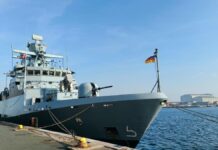
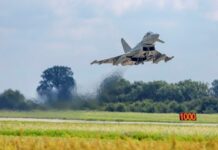
![Hybrid navies: Integrating uncrewed capability into carrier strike The US Navy (USN) carrier USS John C Stennis (left), the French Navy carrier FS Charles de Gaulle, and elements of their strike groups are pictured sailing together in US Fifth Fleet’s area of operations. The US, French, and UK navies are all developing ‘hybrid’ crewed/uncrewed mixes for their carrier airwing capability. [US Navy]](https://euro-sd.com/wp-content/uploads/2025/09/2-HST-CdG-USN-Kopie-218x150.jpg)
![Strategic shift: UK CSG deployment demonstrates switch in UK strategic focus The UK aircraft carrier HMS Prince of Wales (foreground) sails alongside the US carrier USS George Washington during Australia’s ‘Talisman Sabre’ exercise in July 2025. The two carrier strike groups (CSGs), plus Australian Navy assets, conducted CSG integration activities. [Crown copyright 2025]](https://euro-sd.com/wp-content/uploads/2025/09/1-PWLS-GW-TSabre-CC-UK-MoD-25-Kopie-218x150.jpg)

![MGCS status update The KNDS EMBT-ADT 140 technology demonstrator on display at the Eurosatory 2024 exhibition. This model featured the 140 mm configuration of the ASCALON gun. [Mark Cazalet]](https://euro-sd.com/wp-content/uploads/2025/08/EMBT-EDT-140_Mark-Cazalet-Kopie-218x150.jpg)
